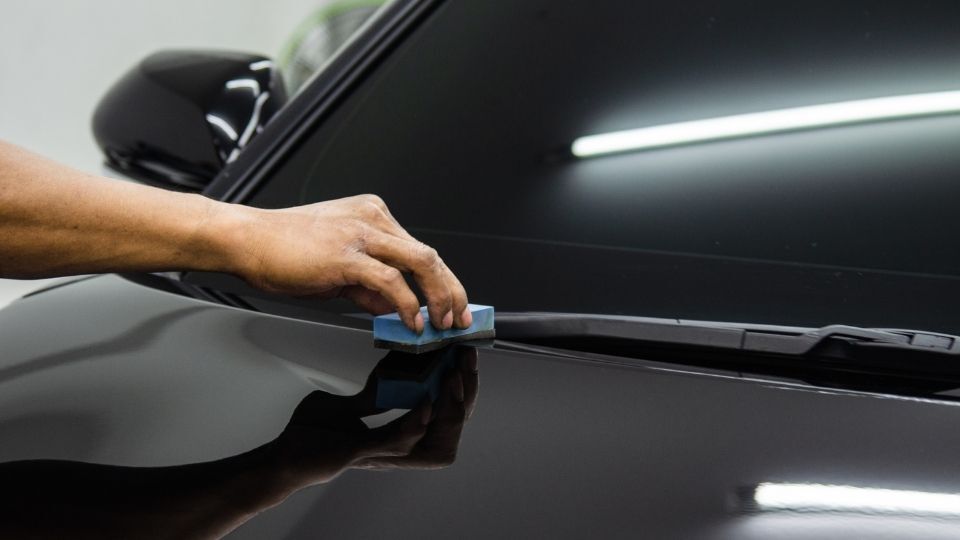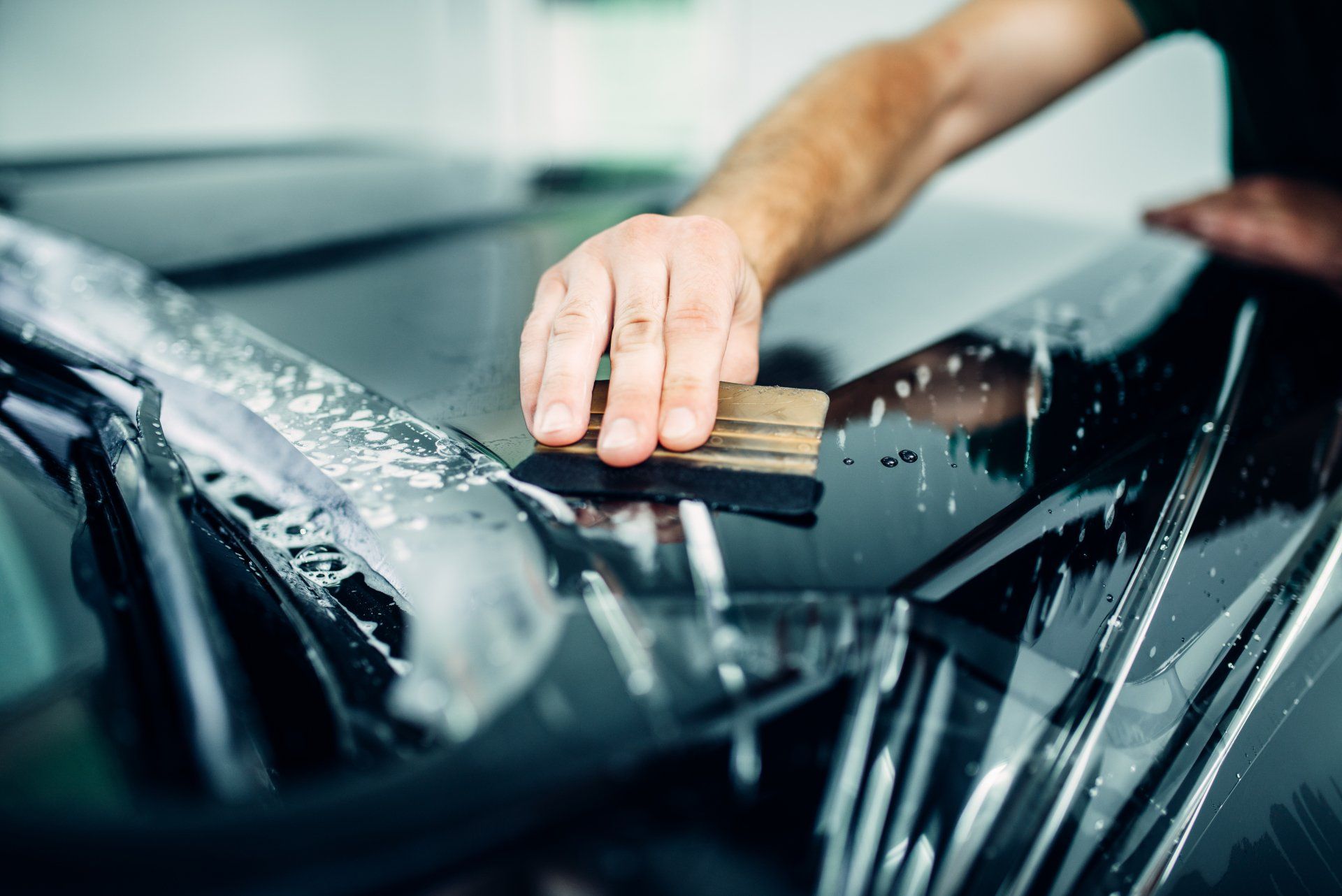Ceramic Coating: The Future of Automotive Surface Protection
Ceramic Coating: The Future of Automotive Surface Protection
Blog Article
Ceramic Finish vs. Conventional Wax: Which Supplies Much Better Long-Term Defense?
The discussion in between ceramic coverings and standard wax for automobile protection has actually gathered considerable attention amongst automobile fanatics and specialists alike. Ceramic layers boast superior long life and resistance to environmental factors, yet the intricacy of their application increases questions concerning availability and usefulness.
Overview of Ceramic Covering
Ceramic covering has actually gotten significant appeal amongst vehicle lovers and detailers alike because of its advanced protective top qualities. This cutting-edge modern technology is created to create a long lasting, hydrophobic shield over a vehicle's paint surface, significantly improving its resistance to ecological pollutants such as dust, UV rays, and chemical stains. Unlike standard wax, which offers a temporary layer of security, ceramic coatings bond at a molecular level with the paint, using long-lasting resilience-- typically extending past two years with appropriate upkeep.
The application procedure includes meticulous preparation of the automobile's surface area, including cleansing and polishing to guarantee ideal attachment. As soon as applied, the coating remedies to develop a durable layer that not only adds depth and gloss to the paint however likewise streamlines upkeep. With its hydrophobic buildings, ceramic finishing permits water and dust to glide off even more easily, minimizing the regularity of cleans and decreasing the danger of swirl marks.
Additionally, ceramic finishes are readily available in various formulations, allowing users to select products tailored to their specific requirements and preferences. Generally, ceramic layer stands for a substantial innovation in paint protection innovation, providing exceptional performance compared to traditional choices.
Summary of Traditional Wax
Typically considered as a staple in automobile care, wax functions as a popular option for those seeking a straightforward method to improve and protect their vehicle's paint - ceramic coating. Automotive wax generally consists of all-natural components, such as carnauba, or synthetic substances, made to develop a safety layer externally of the paint. This layer not just enhances the vehicle's gloss and beam but likewise provides an obstacle versus ecological contaminants
The application of wax is generally easy to use, making it accessible for both experts and DIY fanatics. Once used, wax calls for a curing duration, after which it hardens to create a safety shell.
Nonetheless, while wax is efficient for boosting the aesthetic appeal of an automobile, it is necessary to keep in mind that the protection it provides might demand a lot more constant reapplication contrasted to alternative products, such as ceramic coatings. In general, standard wax continues to be a favored alternative for those focusing on convenience of use and instant aesthetic improvement.
Toughness and Long Life Contrast
While both ceramic coverings and standard wax deal safety advantages for automotive paint, their toughness and long life vary considerably. Standard wax, typically made from natural carnauba or synthetic polymers, generally provides a protective layer that lasts roughly three to six months. This relatively short life expectancy requires routine reapplication to maintain optimum defense.
In contrast, ceramic layers are engineered from sophisticated nanotechnology, forming a covalent bond with the paint surface. This leads to a robust, hydrophobic layer that can sustain for 2 to 5 years, depending on the product and environmental problems. The remarkable sturdiness of ceramic finishings is connected to their chemical framework, which provides enhanced resistance to scratches, UV rays, and oxidation.

Protection Against Ecological Elements
Safeguarding a lorry's paint from ecological aspects is important for preserving its appearance and worth gradually. Vehicles are frequently subjected to a variety of aspects, including UV rays, bird droppings, tree sap, acid rain, and roadway crud, all of which can jeopardize the honesty of the paintwork.
Ceramic coverings give a durable protection versus these environmental aggressors. Unlike typical wax, which can deteriorate promptly under UV exposure, ceramic finishes form a resilient, hydrophobic layer that stands up to the hazardous effects of sunlight and ecological toxins. This advanced technology produces a chemical bond with the automobile's surface area, offering remarkable protection that lasts for years, even in extreme problems.
Traditional wax, while much easier to use, commonly requires frequent reapplication and supplies minimal resistance to impurities and UV rays. Over time, it can break down, leaving the paint susceptible to scrapes and oxidation. In comparison, ceramic layers preserve their protective top qualities longer, considerably minimizing the threat of paint damages and making certain that the lorry preserves its aesthetic charm. Because of this, ceramic finishes are progressively acknowledged as the exceptional selection for long-lasting protection against ecological variables.
Application and Maintenance Differences
The approaches of application and subsequent maintenance for ceramic coverings and typical wax differ dramatically, affecting the general customer experience and efficiency of each item. Ceramic coverings require a more complex application procedure, generally including surface area preparation that includes washing, sanitizing, and polishing the automobile. Once the surface prepares, the ceramic layer is applied in a controlled setting, often requiring specialist competence to make certain proper healing and bonding to the paint.

While both you could look here items boost vehicle appearance, the longer-lasting defense offered by ceramic finishings might validate their first financial investment, in spite of the even more requiring application procedure. Alternatively, conventional wax continues to be a preferred selection for those looking for an easier, albeit short-term, solution.

Verdict
In final thought, ceramic coatings demonstrate significant advantages over traditional wax in regards to durability and environmental management. With a lifespan expanding 2 to 5 years and premium resistance to UV rays, dust, and chemical spots, ceramic finishes provide a this contact form much more efficient service for lasting vehicle upkeep. Although the application process might call for expert experience, the resulting expense savings and minimized regularity of reapplication highlight the worth of ceramic finishings for those looking for ideal car protection.
The dispute between ceramic coverings and conventional wax for car defense has actually garnered substantial attention amongst automobile enthusiasts and professionals alike. Unlike traditional wax, which provides a temporary layer of protection, ceramic finishings bond at a molecular level with the paint, offering lasting longevity-- commonly extending past 2 years with proper maintenance.
While both ceramic coatings and traditional wax offer safety benefits for automobile paint, their durability and durability vary significantly. For auto enthusiasts looking for lasting defense, ceramic finishes present a compelling benefit over traditional wax items.
In conclusion, ceramic finishes show significant advantages over typical wax in terms of toughness and environmental protection.
Report this page